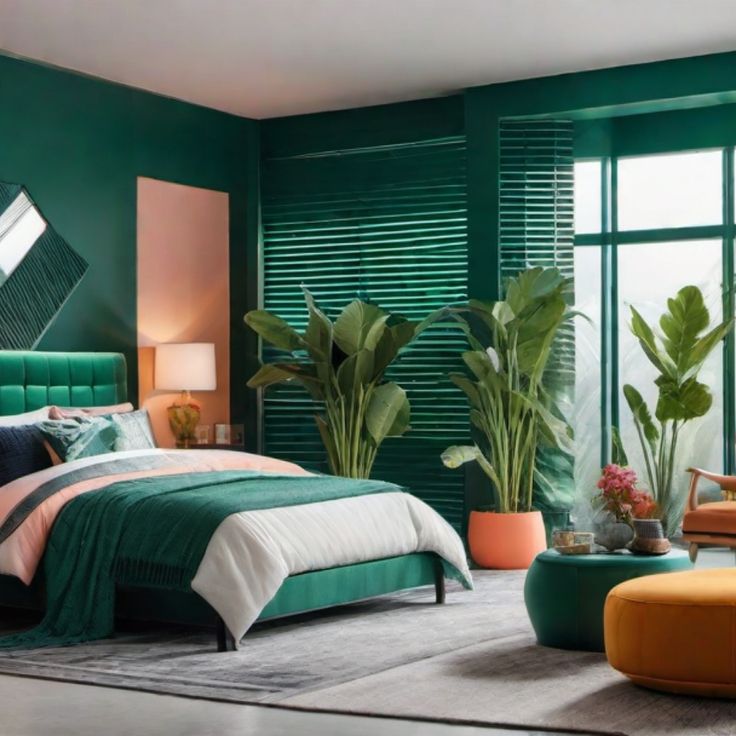The 1980s were a vibrant era in interior design, characterized by bold colors, geometric patterns, and unique materials. Today, these distinctive elements are experiencing a resurgence, offering homeowners an opportunity to infuse their spaces with nostalgic charm while maintaining a modern aesthetic. By thoughtfully integrating select 1980s design features, you can create interiors that pay homage to the past without compromising contemporary sensibilities.
Key 1980s Design Elements Making a Comeback:
- Glass Block Walls:
- Then: Glass blocks were widely used in the 1980s to construct walls and partitions, providing both privacy and natural light.
- Now: Modern interiors are reintroducing glass block walls to delineate spaces without sacrificing openness. For instance, incorporating a glass block partition in a bathroom can create a stylish separation between the shower and vanity areas while allowing light to permeate.
- Tiled Fireplaces:
- Then: Fireplaces adorned with colorful, patterned tiles served as focal points in 1980s living rooms.
- Now: Contemporary designs are embracing tiled fireplaces to add character and individuality to spaces. Selecting retro-inspired tiles in subdued hues can provide a sophisticated nod to this trend without overwhelming the room’s aesthetic.
- Bold Color Palettes:
- Then: The 1980s celebrated vibrant colors, including neon and pastel shades, influenced by pop culture and media.
- Now: While neon accents are used sparingly, incorporating bold colors through statement furniture pieces or accent walls can invigorate a space. For example, a mauve-colored sofa can serve as a striking centerpiece in a neutral-toned living room.
- High-Shine Metallics:
- Then: Reflective surfaces and metallic finishes were prevalent, often contributing to a sense of opulence.
- Now: Contemporary interiors utilize high-shine metallics in more restrained ways, such as incorporating unlacquered brass fixtures that develop a natural patina over time, adding depth and historical context to the design.
- Memphis Design Influence:
- Then: The Memphis Group introduced playful, geometric designs with bold colors and patterns.
- Now: Elements of Memphis design are resurfacing in modern interiors through statement pieces like geometric-patterned rugs or colorful, abstract art, adding a whimsical touch to contemporary spaces.
Tips for Incorporating 1980s Elements into Modern Interiors:
- Balance is Key: To avoid overwhelming a space, integrate 1980s elements as accents rather than dominant features. For instance, pair a bold, geometric-patterned rug with minimalist furniture to maintain harmony.
- Modern Materials: Update classic 1980s designs by using contemporary materials. For example, opt for sleek, matte finishes on metallic fixtures instead of the high-gloss surfaces typical of the era.
- Personal Expression: Select elements that resonate with your personal style. The 1980s were about individuality, so choose pieces that reflect your unique aesthetic while complementing your home’s overall design.
By thoughtfully reviving and adapting 1980s design elements, you can create a contemporary space that exudes nostalgia and modern sophistication.

No responses yet